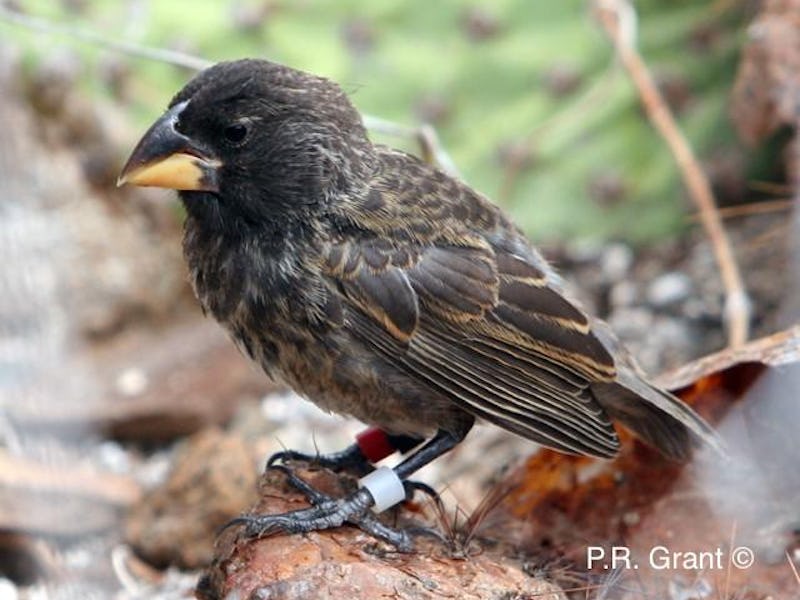Strange Galapagos "Big Bird" Reveals Outcome of Super-Fast Evolution
It was created in only three generations.

After four decades of studying birds in the Galapagos Islands, scientists have discovered that new species can evolve more rapidly than ever expected. Since the days of Charles Darwin, the Galapagos Islands have served as a natural laboratory where scientists could observe the forces of natural selection and the formation of new species in the wild. In particular, Darwin’s finches formed a model of natural selection that illustrated how geographic isolation could give rise to new species. But even Darwin couldn’t have predicted how quickly this new species can form.
In a paper published November 23 in the journal Science, researchers from Princeton University and Uppsala University in Sweden report that a new species of finch arose in just three generations on the island of Daphne Major.
Typically, researchers understand the formation of new species as a long, slow process. For instance, humans evolved from our non-human primate ancestors over thousands of years. This new research could turn this view on its head.
The father of the first "Big Bird" was a member of the G. conirostris species that flew about 62 miles to Daphne Major.
This new species of finch, named “Big Bird” by the researchers, arose in just three generations after a strange bird’s arrival to Daphne Major. According to direct observations reported by Princeton researchers B. Rosemary Grant, Ph.D., and Peter R. Grant, Ph.D., two of the paper’s authors, a newcomer bird arrived on the island around 1981. It was distinct in shape, size, and song from the three species that already lived on the island.
Unable to fly back to the island of Española, about 62 miles away, this foreign bird stayed and bred with the locals. Specifically, it mated with members of the ground finch species Geospiza fortis. The newcomer, which scientists have identified as the large cactus finch species Geospiza conirostris, fathered offspring, which in turn bred among themselves.
G. fortis was already on Daphne Major when G. conirostris arrived.
Long story short, since the new hybrid offspring of G. fortis and G. conirostris couldn’t successfully attract mates from the locals, they bred among themselves. Despite the known risks of inbreeding, these new finches did not exhibit any harmful traits, and, in fact, fit into a unique ecological niche on the island. By breeding among themselves, they reinforced their unique hybrid physical characteristics and cemented themselves as members of a new species.
"Big Bird"
Based on scientists’ observations as well as confirmatory genetic studies, this new species, which the researchers refer to as “Big Bird,” arose in just three generations from its parents’ chance encounter.
This news is big because the other species of finches on the Galapagos Islands are thought to have evolved from a single finch species that arrived in the Galapagos at least a million years ago. And this paper suggests that these shorter speciation events could have occurred multiple times during that period. Each species that arose has developed a unique beak shape that helps it take advantage of a specific food source and lifestyle, and Big Bird is no different. Its beak is unique from the other three finch species living on Daphne Major, suggesting that it likely won’t be in direct competition with them for resources.
“A naturalist who came to Daphne Major without knowing that this lineage arose very recently would have recognized this lineage as one of the four species on the island. This clearly demonstrates the value of long-running field studies,” said Leif Andersson, a professor at Uppsala University and one of the authors of the study, in a statement.